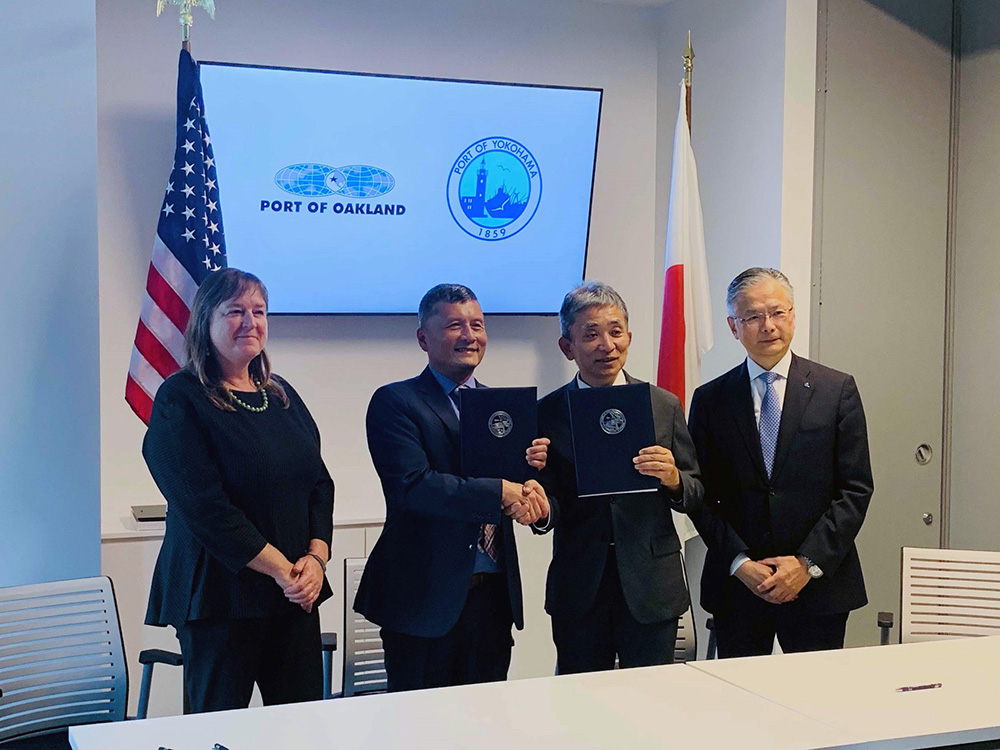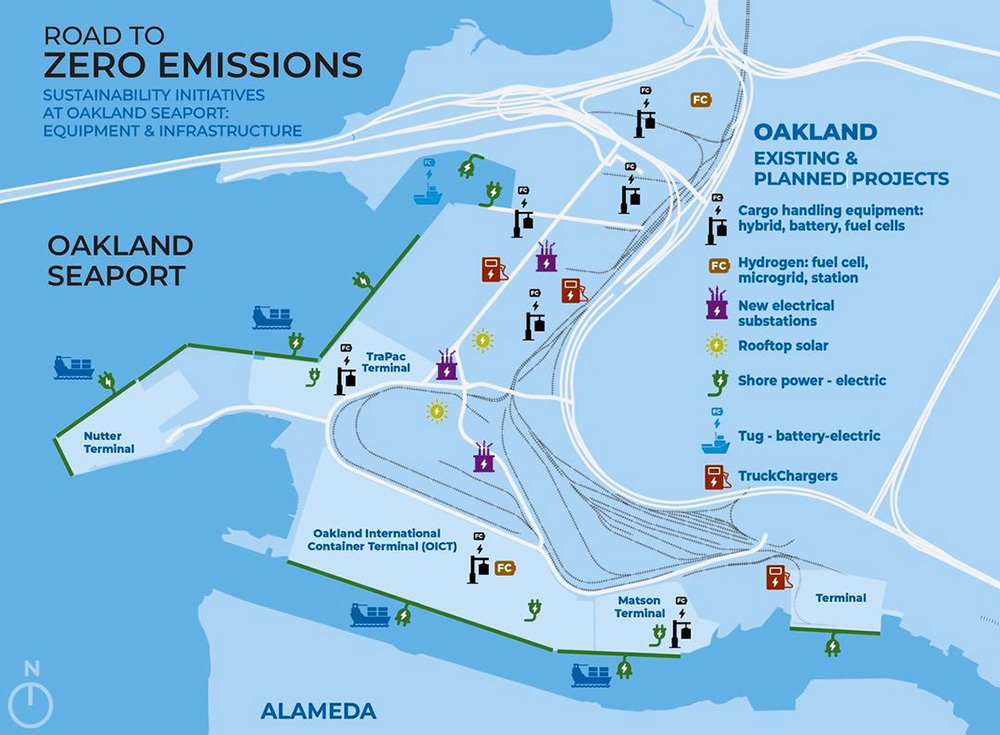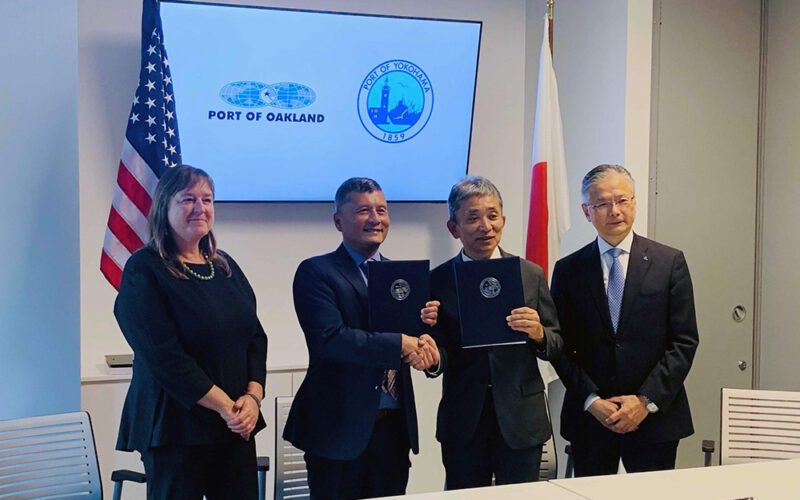
The Port of Oakland and the Port of Yokohama in Japan have signed a Green Shipping Corridor Memorandum of Understanding that allows both seaports to further their efforts to decarbonize the trade route between them, the Northern California port announced Oct. 20.
Both ports are expected to discuss ways to lower emissions through the development of low carbon and zero-emissions cargo handling equipment and vehicles, as well as fuel alternatives.
The ports have a history of partnership that dates back to May 1980, when they first became sister ports. Oakland is a major gateway for Asia, especially Japan, the final destination for about 16% of export business departing from Oakland.
“Japan has demonstrated its commitment to decarbonization initiatives and partnerships to achieve these ambitious goals,” Port of Oakland Executive Director Danny Wan said. “Agreements like this MOU are an essential part of establishing the explicit intent to reduce emissions and implementation of worthy projects that can get the job done. We look forward to working collaboratively with the Port of Yokohama and hope that our ports’ efforts inspire others around the world to do the same.”
“Today we are focused on upgrading, modernizing and enhancing our electrical infrastructure and developing a wide range of decarbonization pathways and technologies with our maritime tenants, customers, and supply chain partners,” said Port of Oakland Chief Operations Officer Kristi McKenney, who’s leading the port’s zero-emissions initiatives and was an official signing witness to the MOU.
“Agreements like this will help drive these critical initiatives forward and create positive change at the local and international levels,” she added.

The Oakland and Yokohama seaports plan to share their best practices on a variety of projects that reduce carbon emissions including developing low carbon and zero-emissions cargo handling equipment; trucks and other transportation equipment; exploring alternatives to petroleum-based fuel sources; and leveraging their leadership positions to advocate for green ports, in addition to the creation of a Green Shipping Corridor between the trade gateways.
Wan added that there are a wide range of strategies that are being deployed and studied in Oakland to reduce harmful emissions locally.
They include the introduction of hybrid technologies in the near-term to reduce diesel emissions for heavy-duty equipment by 95%; battery electric and hydrogen-powered trucks, cargo handling equipment and tugs; and renewable, locally generated power, microgrids and battery-electric storage systems.
Next steps for decarbonizing port operations have been outlined in the Port of Oakland’s Seaport Air Quality 2020 and Beyond Plan, with the goal of achieving zero emissions.
The plan has five goals:
- To keep the port competitive and financially sustainable, and ensure that it remains a catalyst for jobs and economic development.
- To minimize emissions of criteria air pollutants and toxic air contaminants, with a focus on reducing diesel particulate matter emissions, thereby reducing community exposure to pollutants that are harmful to public health.
- Reduce greenhouse gas emissions.
- Build and strengthen partnerships among the port. its tenants, equipment manufacturers, equipment owners and operators, community organizations, regulatory agencies and the public.
- To provide opportunities for meaningful stakeholder engagement.
The full 320-page plan is available at https://tinyurl.com/yv9yckhh

